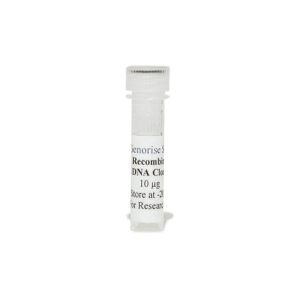Nori Hamster FABP4 ELISA Kit
$461.00 – $832.00
This ELISA kit is for quantification of FABP4 in hamster. This is a quick ELISA assay that reduces time to 50% compared to the conventional method, and the entire assay only takes 3 hours. This assay employs the quantitative sandwich enzyme immunoassay technique and uses biotin-streptavidin chemistry to improve the performance of the assays. An antibody specific for FABP4 has been pre-coated onto a microplate. Standards and samples are pipetted into the wells and any FABP4 present is bound by the immobilized antibody. After washing away any unbound substances, a detection antibody specific for FABP4 is added to the wells. Following wash to remove any unbound antibody reagent, a detection reagent is added. After intensive wash a substrate solution is added to the wells and color develops in proportion to the amount of FABP4 bound in the initial step. The color development is stopped, and the intensity of the color is measured.
Alternative names for FABP4: fatty acid binding protein 4, aP2 (adipocyte Protein 2)
This product is for laboratory research use only not for diagnostic and therapeutic purposes or any other purposes.
- Description
- How Elisa Works
- Product Citation (0)
- Reviews (0)
Description
Nori Hamster FABP4 ELISA Kit Summary
Alternative names for FABP4: fatty acid binding protein 4, aP2 (adipocyte Protein 2)
Alternative names for hamster: golden hamster, syrian hamster
| Assay Type | Solid Phase Sandwich ELISA |
| Format | 96-well Microplate or 96-Well Strip Microplate |
| Method of Detection | Colorimetric |
| Number of Targets Detected | 1 |
| Target Antigen Accession Number | Q5UCA1 |
| Assay Length | 3 hours |
| Quantitative/Semiquantitative | Quantitative |
| Sample Type | Plasma, Serum, Cell Culture, Urine, Cell/Tissue Lysates, Synovial Fluid, BAL, |
| Recommended Sample Dilution (Plasma/Serum) | No dilution for sample <ULOQ; sufficient dilution for samples >ULOQ |
| Sensitivity | 25 pg/mL |
| Detection Range | 0.125-8 ng/mL |
| Specificity | Hamster FABP4 |
| Cross-Reactivity | < 0.5% cross-reactivity observed with available related molecules, < 50% cross-species reactivity observed with species tested. |
| Interference | No significant interference observed with available related molecules |
| Storage/Stability | 4 ºC for up to 6 months |
| Usage | For Laboratory Research Use Only. Not for diagnostic or therapeutic use. |
| Additional Notes | The kit allows for use in multiple experiments. |
Standard Curve
Kit Components
1. Pre-coated 96-well Microplate
2. Biotinylated Detection Antibody
3. Streptavidin-HRP Conjugate
4. Lyophilized Standards
5. TMB One-Step Substrate
6. Stop Solution
7. 20 x PBS
8. Assay Buffer
Other Materials Required but not Provided:
1. Microplate Reader capable of measuring absorption at 450 nm
2. Log-log graph paper or computer and software for ELISA data analysis
3. Precision pipettes (1-1000 µl)
4. Multi-channel pipettes (300 µl)
5. Distilled or deionized water
Protocol Outline
1. Prepare all reagents, samples and standards as instructed in the datasheet.
2. Add 100 µl of Standard or samples to each well and incubate 1 h at RT.
3. Add 100 µl of Working Detection Antibody to each well and incubate 1 h at RT.
4. Add 100 µl of Working Streptavidin-HRP to each well and incubate 20 min at RT.
5. Add 100 µl of Substrate to each well and incubate 5-30 min at RT.
6. Add 50 µl of Stop Solution to each well and read at 450 nm immediately.
Background:
aP2 (adipocyte Protein 2)[1, 2] is a carrier protein for fatty acids that is primarily expressed in adipocytes and macrophages. aP2 is also called fatty acid binding protein 4 (FABP4). Blocking this protein either through genetic engineering or drugs has the possibility of treating heart disease,[3] diabetes,[4] asthma,[5] obesity,[6] and fatty liver disease.[7]
References
- Marr, E. et al. (2006). Acta Crystallographica Section F Structural Biology and Crystallization Communications 62 (11): 1058–1060.
- Baxa CA, et al. (1989). Biochemistry 28 (22): 8683–90.
- Makowski L, (2001). Med. 7 (6): 699–705.
- Furuhashi M, et al. (2007). Nature 447 (7147): 959–65.
- Shum BO, et al. (2006). Clin. Invest. 116 (8): 2183–2192.
- Maeda K, et al. (2005). Cell Metab. 1 (2): 107–19.
- Makowski L, Hotamisligil GS (2005). Opin. Lipidol. 16 (5): 543–8.
Be the first to review “Nori Hamster FABP4 ELISA Kit”
You must be logged in to post a review.






























Reviews
There are no reviews yet.